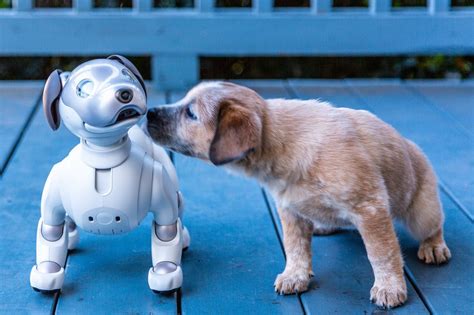Introduction

In the world of pet ownership, the traditional concept of a living, breathing companion is rapidly evolving. Enter toy pets and robotic pets, two innovative alternatives that are capturing the hearts of pet lovers worldwide. In this article, we delve into a comprehensive comparison of these two pet categories, exploring their unique features, benefits, and drawbacks.
Toy Pets: A Timeless Classic
-
Definition: Toy pets are inanimate objects designed to resemble animals, typically made from soft materials like plush or plastic. They offer a low-maintenance option for those seeking companionship without the responsibilities of a live pet.
-
Types: Toy pets come in a vast array, ranging from cuddly stuffed animals to realistic toy breeds. Some feature interactive elements, such as motion sensors or sound effects, to enhance the play experience.
-
Benefits:
– Low maintenance: Toy pets do not require feeding, grooming, or veterinary care, making them an ideal choice for busy individuals or those with limited time.
– Emotional comfort: Studies have shown that interacting with toy pets can provide emotional support, reduce stress, and promote a sense of well-being.
– Educational value: Toy pets can be used as educational tools, helping children learn about animals, empathy, and responsible pet ownership. -
Drawbacks:
– Limited interaction: Unlike live pets, toy pets cannot offer reciprocal affection or companionship. They provide a one-sided emotional experience.
– Durability concerns: Toy pets, especially those made from delicate materials, can be susceptible to damage and wear over time.
Robotic Pets: A Glimpse into the Future
-
Definition: Robotic pets are electronically powered devices that simulate the behavior and appearance of real animals. They often feature advanced technology, such as artificial intelligence (AI), sensors, and actuators, to create a lifelike and interactive experience.
-
Types: Robotic pets come in various forms, from dog-shaped bots to robotic fish and even robotic dinosaurs. Some models are designed with specific functions, such as therapeutic companion pets or educational aids.
-
Benefits:
– Realistic companionship: Robotic pets offer a level of interaction and companionship that is closer to that of a live pet. They can respond to commands, show affection, and even learn and adapt over time.
– Therapeutic value: Robotic pets have been found to provide therapeutic benefits, particularly for individuals with disabilities, dementia, or loneliness.
– Convenience: Similar to toy pets, robotic pets require minimal maintenance and can provide companionship without the full-time responsibilities of a live pet. -
Drawbacks:
– Cost: Robotic pets can be significantly more expensive than toy pets, making them less accessible to certain budget ranges.
– Limited emotional connection: While robotic pets can provide realistic companionship, they may not evoke the same level of emotional connection as a living pet.
– Technological dependency: Robotic pets rely on technology to function, which introduces potential risks of malfunctions or repairs.
Comparison of Toy Pets and Robotic Pets
| Feature | Toy Pets | Robotic Pets |
|---|---|---|
| Maintenance | Low to none | Moderate |
| Interaction | One-sided | Interactive and responsive |
| Emotional connection | Limited | Can be realistic |
| Durability | Can be fragile | Typically more durable |
| Cost | Generally affordable | Can be expensive |
| Educational value | Can be educational | Often designed with educational features |
| Therapeutic value | Potential emotional comfort | Proven therapeutic benefits |
Market Insights
The market for toy pets and robotic pets is projected to experience significant growth in the coming years. According to a report by MarketWatch, the global toy pet market is expected to reach $42.4 billion by 2025. Similarly, the robotic pet market is anticipated to grow at a compound annual growth rate (CAGR) of 15.2% between 2021 and 2027, reaching $4.0 billion by the end of the forecast period.
Key Consumer Trends
Several key consumer trends are driving the growth of the toy pet and robotic pet markets:
- Increasing urbanization: As more people move to urban areas, space constraints and busy lifestyles are leading to a growing demand for low-maintenance pet alternatives.
- Aging population: The aging population is creating a need for compassionate solutions to combat loneliness and provide therapeutic support. Robotic pets offer a promising solution in this regard.
- Technological advancements: Advancements in artificial intelligence and robotics are enabling the creation of increasingly sophisticated robotic pets that closely mimic the behavior of real animals.
Customer Wants and Needs
Pet owners have diverse wants and needs that can be addressed by both toy pets and robotic pets.
Toy Pet Owners:
– Low maintenance and convenience
– Emotional comfort and companionship
– Affordability
Robotic Pet Owners:
– Realistic companionship and interaction
– Therapeutic benefits
– Convenience and minimal maintenance
How to Stand Out in the Market
To stand out in the competitive toy pet and robotic pet markets, businesses can focus on the following strategies:
- Innovation: Developing unique and innovative toy or robotic pet designs that appeal to specific consumer needs.
- Technology integration: Incorporating advanced technology, such as AI and sensors, to enhance the interactivity and lifelike qualities of robotic pets.
- Emotional appeal: Creating toy pets and robotic pets that evoke genuine emotional connections with their users.
- Customization: Offering customization options to allow consumers to personalize their toy or robotic pet to their individual preferences.
Conclusion
Toy pets and robotic pets offer unique alternatives to traditional pet ownership, catering to the evolving needs of modern consumers. While toy pets provide low-maintenance companionship and emotional comfort, robotic pets offer a more interactive and realistic pet experience with potential therapeutic benefits. As the market for these pet alternatives continues to expand, businesses that focus on innovation, emotional appeal, and customization will be well-positioned to capture the hearts of pet lovers worldwide.





















